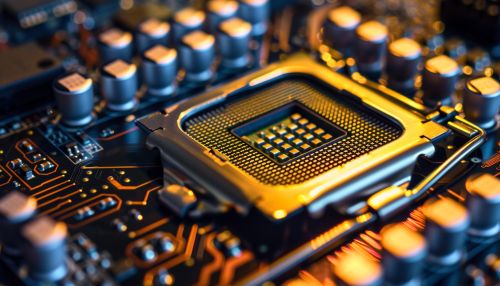Floating-point arithmetic
Overview
Floating-point arithmetic is a method of performing mathematical operations on real numbers. The term "floating point" refers to the fact that the decimal point can "float"; that is, it can support a variable number of digits before and after the decimal point. This contrasts with fixed-point arithmetic, where the number of digits before and after the decimal point is set.
Floating-point arithmetic is used in computer systems because it can support a wider range of values than fixed-point arithmetic, and can be more precise. It is used in many areas of computing, including graphics, scientific computations, and financial applications.


Representation of Floating-Point Numbers
In a computer, floating-point numbers are represented using a standard known as the IEEE 754 standard. This standard defines how real numbers can be represented in binary form, and how operations on these numbers should be performed.
A floating-point number in the IEEE 754 standard is represented by three parts: the sign, the exponent, and the mantissa (or significand). The sign is a single bit that represents whether the number is positive or negative. The exponent is an 8-bit (for single-precision numbers) or 11-bit (for double-precision numbers) field that represents the power of 2 that the mantissa is to be multiplied by. The mantissa is a 23-bit (for single-precision) or 52-bit (for double-precision) field that represents the actual digits of the number.
Operations on Floating-Point Numbers
The IEEE 754 standard defines several operations that can be performed on floating-point numbers, including addition, subtraction, multiplication, division, and square root. These operations are performed in a way that maximizes the precision of the result, and handles special cases such as division by zero or the square root of a negative number.
In addition to these basic operations, many computer systems provide additional operations such as trigonometric functions, logarithms, and exponentials. These operations are typically implemented using a combination of basic floating-point operations and lookup tables.
Precision and Accuracy
One of the key aspects of floating-point arithmetic is the concept of precision and accuracy. Precision refers to the number of digits that a floating-point number can represent, while accuracy refers to how close the represented number is to the actual value.
The precision of a floating-point number is determined by the number of bits in the mantissa. The more bits, the more digits the number can represent, and the greater the precision. However, even with a large number of bits, floating-point numbers cannot represent all real numbers exactly. This is due to the fact that some numbers, such as pi or the square root of 2, are irrational and cannot be represented exactly in any finite number of bits.
Accuracy, on the other hand, is determined by how well the floating-point representation approximates the actual value. This is affected by both the precision of the number and the rounding mode used when performing operations. The IEEE 754 standard specifies several rounding modes, including round to nearest, round towards zero, round towards positive infinity, and round towards negative infinity.
Limitations and Challenges
While floating-point arithmetic is a powerful tool for performing mathematical operations on real numbers, it also has several limitations and challenges. One of the main limitations is the issue of rounding errors. Because floating-point numbers cannot represent all real numbers exactly, operations on these numbers can result in rounding errors. These errors can accumulate over time, leading to significant inaccuracies in calculations.
Another challenge is the issue of overflow and underflow. Overflow occurs when the result of an operation is too large to be represented by the floating-point format, while underflow occurs when the result is too small. The IEEE 754 standard provides mechanisms for handling these situations, but they can still cause problems in certain calculations.
Finally, there is the issue of comparing floating-point numbers. Because of the rounding errors mentioned above, two floating-point numbers that should be equal may not be due to small differences in their representations. This can lead to unexpected results when comparing numbers or when using floating-point numbers as keys in data structures.
